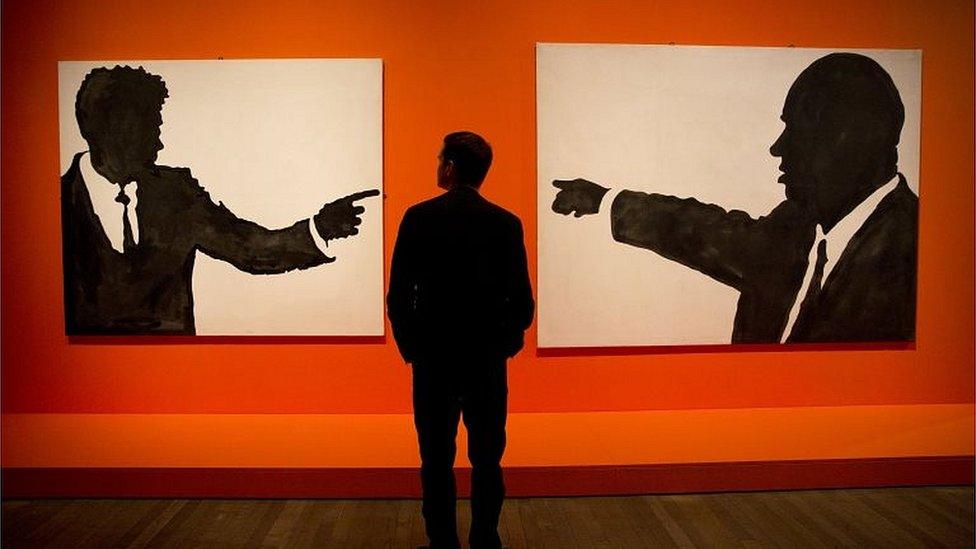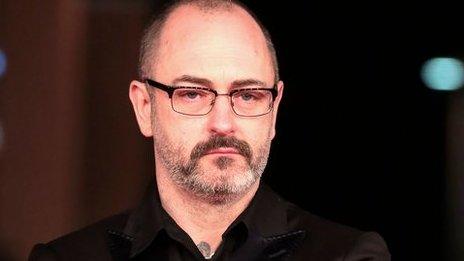It's not art without you
- Published

A visitor looks at paintings of John F Kennedy and Nikita Khrushchev at the press launch of The EY Exhibition: The World Goes Pop at the Tate Modern
Once upon a time, going to an art museum was a straightforward affair. There were paintings and sculptures to look at, learn about and consider - maybe over a coffee in the institution's café. And then you went home. Nice and simple.
Not any more.
Like promenade theatre and interactive games, the stakes have been raised: The 21st century gallery-goer must now participate. Museums are becoming "experiential" places. Fun palaces in which you become part of the artwork.
When the Tate's Director, Nicholas Serota, was briefing the press about the new extension to Tate Modern - The Switch House, to be opened in June next year - he said he wanted it to be a place where "your whole body is engaged in the experience". This is the new way, he said, citing the 2003 installation of Olafur Eliasson's Weather Project, external in Tate Modern's Turbine Hall (the massive sun reflected back in a ceiling of mirrors) as the epoch-defining moment.
And it's true, hundreds of thousands of people voluntarily interacted with Eliasson's artwork by lying on their backs and making like snow angles, or some such. This genuinely came from the visitors, not the artist or the institution. There were no establishment instructions or invitations; it was one of those occasions when events overtake expectations.
The Tate saw, and learnt and reacted - and for the next decade led the way in programming experiential art, from mass-participation performance pieces, to immersive installations such as the dimly lit room of talcum powder created by the magnificent Brazilian artist Cildo Meireles.
It then saw its crown momentarily snatched by MoMA in New York, who presented Marina Abramovic's monographic show, The Artist Is Present, in which she invited visitors to sit opposite her in silent communion.

The Artist Is Present was a 700-hour piece of performance art
Tate then reasserted its position as innovator-in-chief for the art experience business by opening its subterranean oil tanks (called, without any sense of irony, Tate Tanks) during the summer of 2012.
It's a position the institution intends to retain with its new building, which will see the aforementioned Tanks re-introduced. The towering Herzog and De Meuron-designed building will have "as much space for social exchange as it will have for art," according to Tate Modern's outgoing boss Chris Dercon. Which is all very worthy and studiously strait-laced.
But I imagine the upshot will be somewhat different. Just as with Eliasson's giant sun, visitors will use the building as they see fit, not as the institution dictates. All those new social spaces will be about engagement, but not necessarily with all the contemporary paintings, sculptures and installations on show. Might it not become the capitals most expensive and expansive dating space? A pick-up joint for singles and a beauty spot for courting couples.
After all, the Tate marketing copy has long said it is a place for art lovers.
- Published14 July 2015
